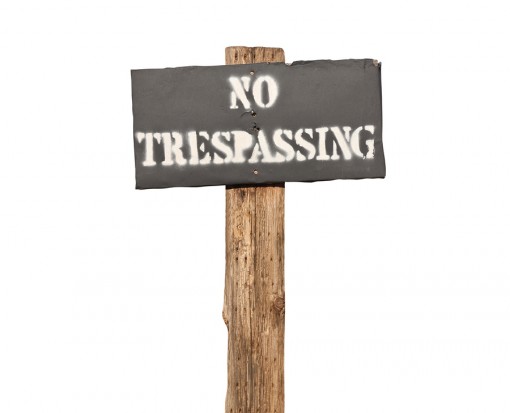
Trespass to land occurs when one party (defendant) directly or intentionally interferes with the land in the exclusive possession of another party (plaintiff) without consent or legal justification.
The elements that need to be proved for trespass to land include:
1. The plaintiffs land was interfered with.
2. The defendant had a sufficient act of interference to the plaintiff’s land.
3. The interference by the defendant was direct.
4. The plaintiff has legal possession of the land.
5. The defendant had the state of mind of voluntary and intentionally, or voluntary and negligently interfering with the land.
The meaning of interference to land includes as example: interference with things growing on the land such as grass, trees; or interference with fixtures on the land, which may be a building, sheds; interference with soil and earth to any depth; or interference with airspace such as a ladder protruding into the airspace of a neighbour’s driveway, or scaffolding from the construction of a property next door.
There must be an act of interference by the defendant to the land, which could be as example: a builder from the next property leaving a pallet of bricks on the plaintiff’s land, such as the driveway inside the plaintiff’s property; or where a person comes on to your land without reasonable cause; or when a person has come onto your land under your consent, and that consent is then withdrawn and then that party does not want to leave.
The relevant test in Australia whether there has been interference with the airspace of the plaintiff, is whether such interference, interferes with the ordinary use of the land. The considerations that need to be taken into account with airspace interference is the nature of the interference, height of the interference, and the effect of the interference.
When trespass occurs it must be direct and not consequential, and the interference on the plaintiff must occur immediately by the defendant’s act. So as example, if two apartments are side by side and the occupants of one apartment are having a BBQ and during that BBQ one person throws their empty beer can on the adjoining balcony, this is a direct interference.
A plaintiff does not need title to land to sue for damages for trespass, the plaintiff just needs to be able to prove a right of possession to the land. A good example is a plaintiff who holds a lease agreement, they do not hold title to the property, but will be able to sue for trespass.
In relation to a licence to access land by a person, the traditional view in Australia is that there is no right to sue for trespass as there is no possession held.
When trespass to land occurs the defendants state of mind is irrelevant, and the act by the defendant just needs to be voluntary and intentional, or voluntary and negligent.
So if a claim needs to be raised against another party for trespass to land, get that legal advice to protect your legal rights & interests.
The comments in the aforementioned do not constitute legal advice and are general in nature, and if legal advice is required please contact: John Melis at Legal AU Pty Ltd (03) 9999 7799
Legal AU Pty Ltd Lawyers are “Liability limited by a Scheme approved under Professional Standards Legislation.”
